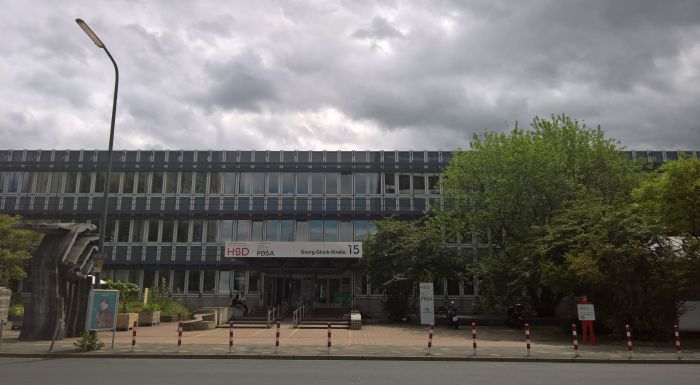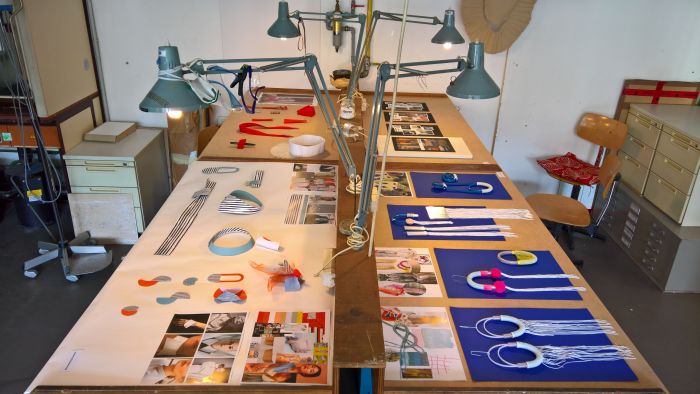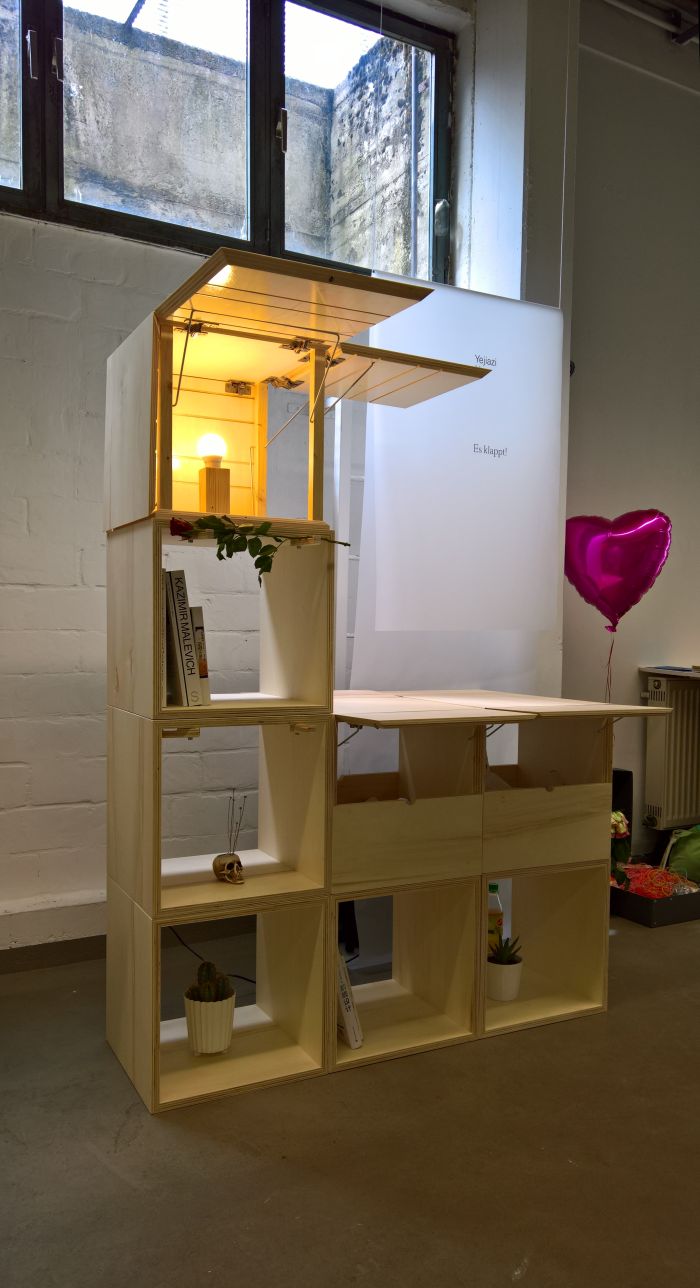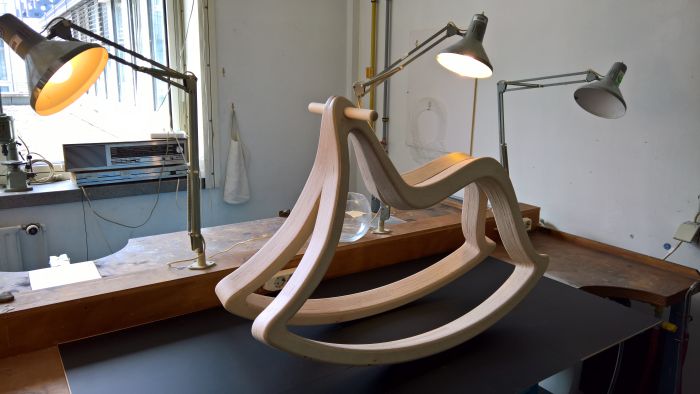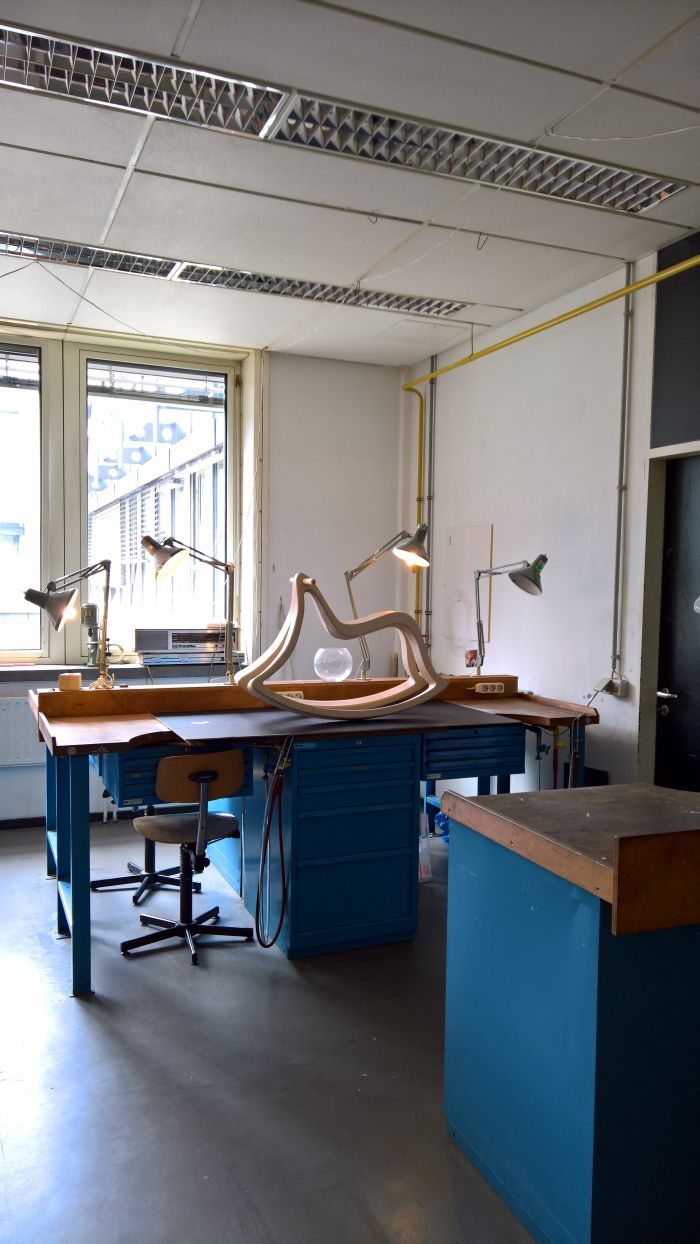#campustour 2017: Werkschau @ Peter Behrens School of Arts, Düsseldorf, Germany
Visiting the 2017 end of year Werkschau exhibition at the Peter Behrens School of Arts, Düsseldorf we were greatly reminded of the school’s eponym’s own time in Düsseldorf.
If not for the reasons one might assume…….
Peter Behrens School of Arts Düsseldorf
Among the many interesting and important buildings which didn’t make an appearance in our Tour de l’architecture de Düsseldorf, one of the more interesting and important is arguably the former Kunstgewerbeschule – Applied Arts College – building in the city’s Altstadt.
Not least because despite only being operational between 1883 and 1918, the Düsseldorf Kunstgewerbeschule counts amongst its Directors several leading protagonists of the age, including the architect Wilhelm Kreis, responsible for many of Düsseldorf’s most defining buildings, including works such as the Ehrenhof complex and the Wilhelm-Marx-Haus, Germany’s first skyscraper; and Peter Behrens, unquestionably one of the most important figures in the development of architecture and design in the first quarter of the 20th century, and the man who through the programmatic, contentual, changes he brought to the school curriculum, the way he sought to move the focus away from the decorative to the functional, first established the reputation of the Kunstgewerbeschule and thus of architecture and design education in Düsseldorf. In addition to helping advance ideas on applied art and architecture education at a time when the role of the architect, artist and craftsman was evolving rapidly, and thus a time in many regards analogous to ours.
Behrens’ tenure in Düsseldorf was also defined by the number of trips he undertook. According to Friedrich Tamms1 between joining the school in March 1903 and departing in August 1907 Behrens made a remarkable 72 trips. And whereas many were unquestionably of the unavoidable and dull variety, did mean that he was, in many regards an absentee Director. Having good ideas, but relaying on others for the implementation.
The contemporary Peter Behrens School of Arts, PBSA, Düsseldorf is not a direct descendant of the Kunstgewerbeschule, but rather is the Architecture and Design Department of the Hochschule Düsseldorf, a multi-focus institution established in 1971 through the merger of existing local colleges, most relevantly in context of the PBSA being, the Düsseldorf Engineering School, the Architecture and Interior Architecture section of the Werkkunstschule Krefeld and the Peter-Behrens-Werkkunstschule Düsseldorf. The later, as with the PBSA, taking Behrens’ name both in tribute to the man and by way of associating themselves with his ideals and values.
Offering post and undergraduate courses of study across a range of architecture, interior architecture and design disciplines, the 2017 Peter Behrens School of Arts Düsseldorf Werkschau offered a chance to assess not only how and what the school’s students had learned in the past year but how they had transferred that into their own understanding of design. And also how much of the spirit of Peter Behrens’ could be found in the school Anno 2017…….
Peter Behrens School of Arts Düsseldorf Werkschau 2017
A Werkschau – Work Show – logically exists to show work, specifically in case of a design school semester and graduation projects. To do such there are a few pre-requisites, of which being open is one. Which yes, seems obvious, yet apparently isn’t a message that has filtered its way through to all the students at the Peter Behrens School of Arts Düsseldorf. Some yes. But not all. Many obviously adhering to the Behrens’ Doctrine on Absenteeism. For despite the advertised 12 noon start, by 12:30 the majority of the exhibition rooms were still locked, the next half-hour saw ever more students saunter in, clearly untroubled by the advanced hour, and by 1 pm almost all were open.
So only an hour late.
Call us old fashioned, but, if you’re staging an exhibition and advertise that it opens at 12 noon, you have to be there, ready at 12 noon.
Or remind us, what are the contemporary arguments against such a position? Hygge.
We genuinely couldn’t have cared if the event had started at 12, 1, 2, 6, 9, just as long as it was on time.
Which we don’t think is too much too ask.
Some students were punctual, and we certainly don’t want to tar all with the same brush of unpunctuality. That we would be unfair. But, we visit student exhibitions a lot. Have never experienced so many locked doors. Except when we’ve turned up on the wrong day. Which does happen.
A couple of years ago we would have been gone by quarter past, but we’ve mellowed in our old age, were still thoroughly unimpressed by the attitude and uncertain as to why we were there …. fortunately a couple of projects did manage to make us tingle…..
Es klappt! by Yejiazi He
What initially attracted us to Es klappt! was a detail, a detail we couldn’t decipher but which drew us in …. and turned out, symbolically enough, to be a hook. And while yes a hook that cannot be automatically identified as such could be considered a poorly designed hook, the fault lay entirely with us and our irritated condition, the Es klappt! hook being an eminently intelligent, logical and well conceived hook.
Although essentially a modular storage system, Es klappt! is so much more, and is more because of intelligent, logical and well conceived solutions such as the lamp – enclosed within a module the four sides can be raised to various positions to help direct the light, or closed to keep the dust out, while the inner surface is coated with reflective paint to help amplify the illumination. Much in the way the tiles of yore helped amplify candle light and thus illuminate Moorish palaces. Equally pleasing are the storage elements with flaps, or perhaps better put, the storage element flaps which open upwards to allow their use as part of a compact desk and/or table. Then there is the hooks which fold out when needed and in when not.
The name of the project is a very clever bit of German wordplay: “Es klappt – It has hinged panels” versus “Es klappt – It works”
Both statements holding true.
Yes, we are, as a general rule, very tired of stackable quadratic plywood box storage systems, very tired; however, Es klappt! has an intrinsic honesty, didn’t feel forced, didn’t feel as if it had been created as quadratic plywood box storage system, but rather that the quadratic plywood box storage system had arisen as the natural, logical consequence of the problem solving exercise undertaken. It’s a small difference, but fundamental in design. In addition, we don’t feel that as a system it is yet complete, we can well envisage that there are further modules waiting to be discovered. One’s just got to looking for them.
As ever with such systems, and although Yejiazi He is very convincing in her explanations of how one can continually rearrange the modules to create, for example, seating groups and desks/tables of varying heights, we don’t for a minute believe anyone will. As soon as you start adding books, ornaments, vases, dog leads, et al, what is built is built. Which is in no way to detract from the system, far from it. It’s just reality.
Rocking Horse by Mauro Mulas
The ingeniously named “Horse” by Jakub Gurecký, as seen at Tendence Frankfurt 2015, remains our all time favourite representative of the genus Equus vel gestatio, but we’re very much liking Mauro Mulas’s as yet unnamed thoroughbred.
As with “Horse”, and perhaps more famously, Walter Papst’s 1960s plastic rocking horse for Wilkhahn, we really liked the implied equine form, you know what it is, it doesn’t have to be anatomically correct, just aesthetically pleasing, functional and durable.
Mauro’s horse is certainly charming, we are in no way easy to impress, and certainly were far from on the day we visited the PBSA Werkschau, were however smitten the moment it swooshed its mane at us across the goldsmith workshop.
Whereby we suspect there was a touch of fate involved. The goldsmith workshop isn’t/wasn’t on the official Werkschau plan, neither is Mauro Mulas. The room was however open at 12 noon. Why…………?
Crafted as it is from two identical, if mirrored, forms, the production process is, relatively simple, or at least as simple as moulded wood ever can be, and we’ll just have to assume it has both a perfectly balanced rocking motion and structural stability, there being no possibility to try it.
All in all a delight, and a colleague we hope to see frolicking in global nurseries very soon. Because horses are social animals, suffer terribly when alone.
More information on the Peter Behrens School of Arts Düsseldorf can be found at https://pbsa.hs-duesseldorf.de/
1. “Friedrich Tamms. Von Menschen, Städten und Brücken”, Econ-Verlag, Düsseldorf 1974
Tagged with: #campustour, Düsseldorf, Peter Behrens School of Arts, Werkschau
